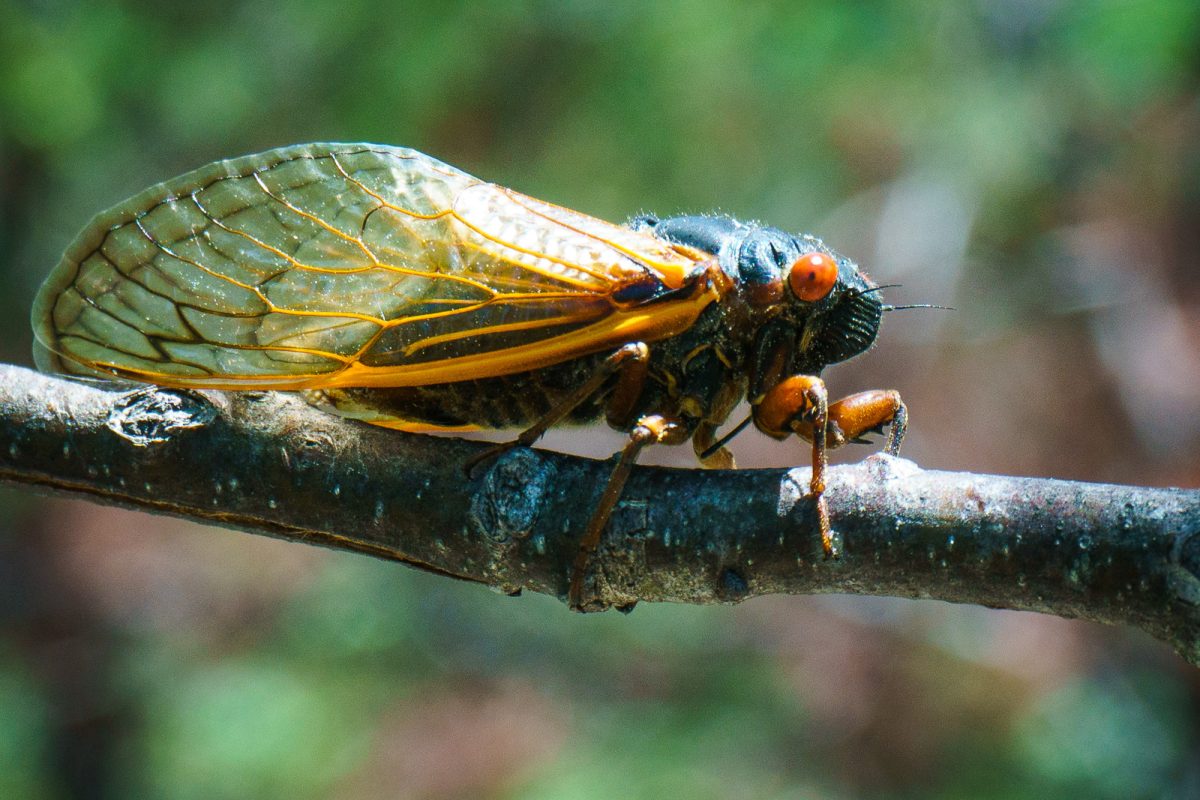As May gets closer, so do swarms of cicadas. Up to a trillion cicadas will emerge in the US. “Cicada-geddon” is upon us.
How many are there? Why?
Cicadas naturally have one of two lasting life cycles: 13 or 17 years. These life cycles are called broods, and the last time two of them emerged at the same time was over 200 years ago.
The two broods emerging are Brood XIX and Brood XIII cicadas. The differences between the two are their cycle spans.
Brood XIX cicadas have a 13-year life cycle, and they last emerged in 2011, whereas Brood XIII cicadas have a 17-year life cycle, and they last emerged in 2007.
According to Floyd W. Shockley from the Smithsonian Museum, if you spread all the cicadas out side by side, they would cover a total of 15,782,828 miles. If you lined them up, they would reach the moon and back 33 times.
The occurrence won’t happen again until the year 2245, making this event once in a lifetime.
When will they emerge? What causes them to come out?
Their arising all depends on the temperature and moisture in the soil. The ground needs to reach 64 degrees Fahrenheit, about 6 inches deep, and after a long rain, they will soon surface. Their estimated time of emergence is late April to early May, depending on where you live.
Where will they be?
The beginning will start in Northern Louisiana and spread northeast across the United States. They will reach southern Illinois before popping up in northern Illinois. Certain spots, such as forests and places with shade, will tend to have increased numbers of cicadas. There, the cicadas will thrive along with their environment.
How long will it last?
The lifespan of a cicada is about a month, and the insects will die close to where they surfaced. When male cicadas first emerge, they will make a buzzing noise, indicating that they are in search of a mate. Compiled together, the ensemble of make cicadas can reach noise levels louder than a plane. The buzzing will last for about six weeks. Overall, the storm of cicadas will last from mid-May to late-June.
Are cicadas harmful?
The most harm that a cicada can do to you would be to flying and accidentally hitting your head. Disregard any myths you may hear; cicadas don’t bite, sting, or carry any diseases. Although they don’t cause harm when consumed, it is best to prevent your pets from eating these insects to prevent digestive issues and intestinal blockage. Cicadas are actually beneficial to the environment, acting as natural tree gardeners. The holes that they leave behind serve as great passageways for rainwater to further distribute into the soil to nourish the trees. Their bodies are beneficial in a multitude of ways. They are a great source of food for birds and other predators, and once they die, their decomposing bodies serve as great fertilizer for gardens. Contrary to their bad reputation, cicadas do more good than harm.
How can I prevent cicadas from infesting my garden?
There is no solid solution to truly fully removing the cicadas’ presence from your home and garden, but you can protect young plants, shrubs, and plants with a few developed branches. Small netting is recommended due to the tulle fabric acting as a protectant from female cicadas laying their eggs and the makes eating away at the smaller leaves. Although slightly harmful to budding plants, cicadas are not all bad. Because of their beneficial factors, they can improve your garden and plant nutrients. Your best bet will be to leave them be and let them do their thing, as opposed to using chemicals. Pesticides and insecticides are unavailing, and if you do end up successfully killing one, it will be replaced in an instant, and you will end up killing the rest of your garden along with the cicadas.
The swarm will kick start the summer season, leaving plants freshly pruned and hydrated and the ground covered in cicada shells. This is an exciting and extraordinary event featuring billions of cicadas, and you should not fear the unknown now with your newly acquired information.





